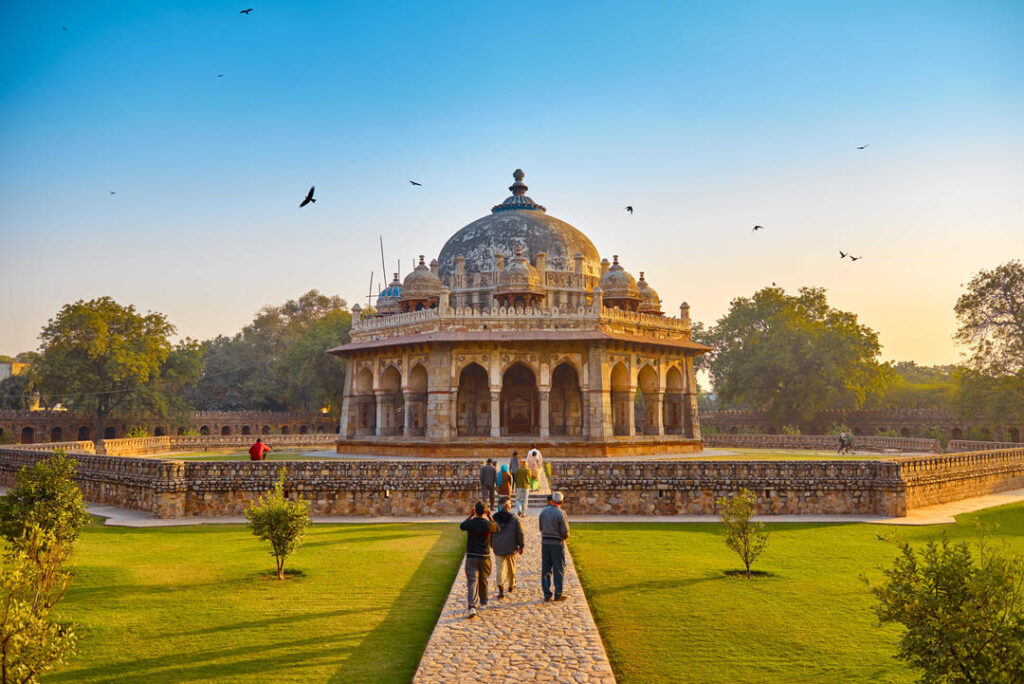Humayun’s Tomb
 Humayun’s Tomb, nestled in the eastern part of Delhi, stands as a testament to the opulence of Mughal architecture. Serving as the final resting place of Mughal Emperor Humayun, this splendid mausoleum is renowned as one of the most well-preserved monuments of its kind in India.
Humayun’s Tomb, nestled in the eastern part of Delhi, stands as a testament to the opulence of Mughal architecture. Serving as the final resting place of Mughal Emperor Humayun, this splendid mausoleum is renowned as one of the most well-preserved monuments of its kind in India.
Constructed in 1565 by Hamida Banu Begum, Humayun’s widow, the tomb showcases a fusion of Persian and Indian architectural styles. Designed by Mirak Mirza Ghiyas, a Persian architect, the structure sits majestically amidst a Persian-style chaharbagh garden, symbolizing paradise as described in the Quran.
Over the centuries, the garden became a necropolis, housing the tombs of various Mughal emperors and their kin. The tomb itself stands on a lofty platform, adorned with graceful arches and crowned by a weightless white marble dome, characteristic of Persian influence.
Inside, the central chamber holds Humayun’s cenotaph, surrounded by arched windows and octagonal corner-chambers containing the graves of other royal family members. The architectural details, including arched alcoves and corridors, reflect Persian design, while the pyramidal kiosks draw from Indian traditions.Humayun’s Tomb, with its intricate beauty and historical significance, served as an inspiration for the iconic Taj Mahal, marking it as a cornerstone of Mughal architectural legacy in India.
